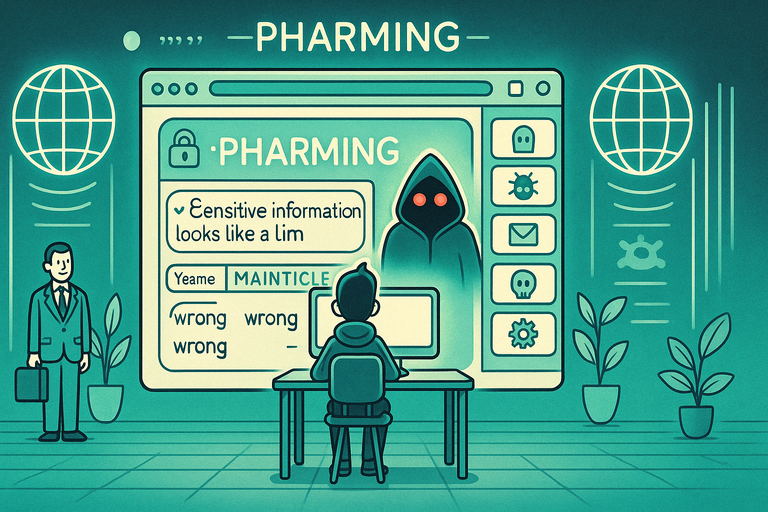Pharming
Understanding and Preventing Pharming Attacks
Pharming is a type of cyberattack where scammers redirect users from legitimate websites to fraudulent ones without their knowledge. This tactic often involves tampering with a website’s DNS settings or infecting users' devices with malware to manipulate browser traffic. Victims may unknowingly provide sensitive information, such as login credentials or payment details, on fake websites.

Things to Be Careful About:
- Unusual Website Behavior: If a trusted website suddenly looks different or asks for unusual information, proceed with caution.
- Malware Infections: Pharming attacks often involve malware that redirects traffic. Regularly scan your devices for threats.
- HTTPS Connection: Ensure the website uses HTTPS, indicated by a padlock icon, to confirm its authenticity.
- Changes in DNS Settings: Be wary of unauthorised changes to your device’s network or DNS settings.
- Unfamiliar URLs: Check the website address carefully for misspellings or unusual domain extensions.
Actions You Can Take:
- Use Secure DNS Services: Opt for trusted DNS providers that offer security against pharming attacks.
- Enable Antivirus Protection: Install and update antivirus software to detect and block malicious redirects.
- Manually Verify URLs: Enter website URLs manually instead of clicking on links in emails or messages.
- Inspect Browser Warnings: Pay attention to browser alerts about insecure or suspicious websites.
- Update Software Regularly: Keep your operating system, browser, and network drivers updated to patch vulnerabilities.
Pharming attacks exploit trust in familiar websites by redirecting users to malicious ones. By staying vigilant and taking proactive measures, you can protect yourself from falling victim to this deceptive scam.
